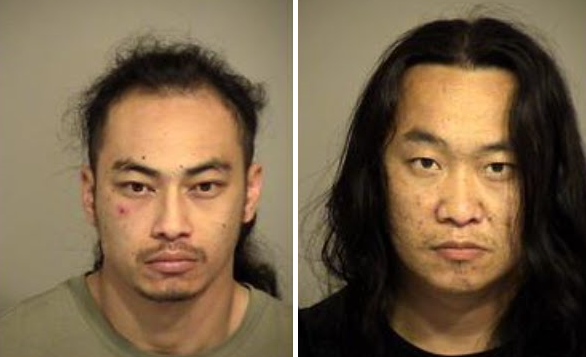At approximately 3:30 a.m. on July 18, 2021, deputies from the Ventura County Sheriff’s Ojai patrol conducted a traffic enforcement stop on a vehicle containing two male occupants, identified in a press release as San Saechao of Antelope and Ker Ly of Sacramento. Inside the vehicle were four stolen catalytic converters, burglary tools and drugs. Throughout that day, the Sheriff’s Communication Center had received calls from Ojai residents who discovered their catalytic converters were stolen. Both suspects were placed under arrest.
Unfortunately for the arresting deputies, the Racial and Identity Profiling Act (RIPA) had taken effect in Ventura County just months earlier. RIPA is California’s attempt to quantify racial profiling in the wake of the Michael Brown shooting. The idea is that a presumption of biased policing exists if the demographic breakdown of a police officer’s stops doesn’t perfectly match the city he or she serves.
RIPA assumes that members of each demographic category commit crimes in exactly the same proportions and in the same places, even though statistics show that men commit more crimes than women, young people commit more crimes than older people, and poorer people commit or are victimized by more crimes than are wealthier people (at least the type of crime a street cop is going to encounter). A hypothetical perfectly unbiased cop should then expect to encounter more people of the dominant demographic in younger, poorer areas (where they receive a disproportionate number of calls for service) in the regular course of duty.
But if an officer’s RIPA “score” doesn’t match the city as a whole, then he or she has a problem. Will a RIPA discrepancy be a factor in determining a promotion or be used to prove guilt in a misconduct allegation or a use-of-force incident? Can a suspect’s defense attorney use the data to discredit an arresting officer in court?
In effect, RIPA establishes a soft quota system police must follow when making stops. Due to its underlying flaws, a “good” RIPA score is impossible to achieve naturally, so it can only exist by gaming the system.
RIPA requires the officer to collect a range of demographic data as he perceives it at each stop: race, language, age, gender, and even sexual orientation — nearly four pages and 20 questions in all. The paperwork alone is enough to discourage officers from pulling people over for minor infractions.
Is it possible it encourages them to start keeping personal tallies of who they are pulling over? Might an officer “perceive” that a multiracial person he stops is whatever race he needs to balance out his RIPA score? If he doesn’t, RIPA certainly creates the perverse incentive for him to shape his score by starting to consider people’s race before he pulls them over, which is precisely the behavior RIPA is supposed to stop.
The deputies in the Ojai catalytic converter theft would have faced this conundrum. Ojai is 80.4 percent white, according to the publicly available RIPA dashboard published by the Ventura County Sheriffs. Depending on what race they identified Saechao and Ly as when they were pulled over, the arresting deputies would have to stop up to 80 white people just to re-balance their RIPA scores back to an “acceptable” amount.
The incident with Saechao and Ly points to another problem with RIPA. The suspects weren’t even from Ojai or Ventura County. They came from other cities with different demographics than Ojai but were counted in Ojai the same as if they resided in the community. Former Sheriff Bill Ayub, who serves on the statewide RIPA board, told the Ventura County Star that somewhere between one-third to one-half of crimes in Ventura County are committed by people who reside in other counties and that RIPA is “inherently flawed.”
After all, the metrics against which officers are measured assume that the demographics of a city are unchanging and evenly spread out. Since crime disproportionately occurs at night, if young people tend to be out past midnight more than older people, and older people tend to be disproportionately white, as is the case in some communities, then police officers working at those times will receive an unfair RIPA score.
RIPA also seeks to reduce pretextual stops, in which police pull over a suspicious vehicle for a minor infraction on a hunch that a crime can be prevented or solved by interacting with the occupants. In Saechao’s and Ly’s case, their white SUV matched the description provided by a 911 caller. But even without this information, proactive deputies could have noticed suspicious behavior like two young men driving around at 3 a.m. in Ojai. By using a pretextual stop for a minor infraction (perhaps they didn’t use their turn signal), the deputies could then talk to the driver and get a look at the vehicle and perhaps notice discrepancies, odd behavior, stories that didn’t add up, and suspicious items, like tools, drugs, car parts or weapons. But RIPA now discourages that, first through sheer paperwork and second by potentially adversely impacting officers’ RIPA scores.
At the same time that California is hobbling law enforcement, it is making crime easier. Within six months of the Ojai thefts, Saechao and Ly were arrested for stealing catalytic converters in Chico. Saechao was sentenced to three years in prison, and Ly’s arraignment is next week.
Proactive policing makes communities safer. RIPA has the potential to destroy proactive policing in Ventura County. Since it demands the impossible, good, unbiased cops will inevitably have bad RIPA scores. They will be incentivized to scale back their efforts, manipulate their scores by shaping who they stop, transfer to safe desk jobs, transfer out of California, retire or not join the department in the first place.
No matter which option they choose, the outcome will be the same — our cities will have fewer good police officers on the streets, and normal citizens will be in more danger.

